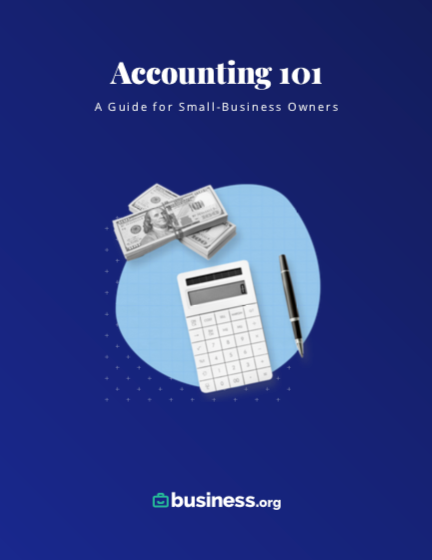We are committed to sharing unbiased reviews. Some of the links on our site are from our partners who compensate us. Read our editorial guidelines and advertising disclosure.
How to Calculate the Future Value of an Investment
The future value formula
There are a few different versions of the future value formula, but at its most basic, the equation looks like this:
future value = present value x (1+ interest rate)n
Condensed into math lingo, the formula looks like this:
FV=PV(1+i)n
In this formula, the superscript n refers to the number of interest-compounding periods that will occur during the time period you're calculating for.
For instance, let's say you're purchasing stock valued at $1,000 with a yearly interest rate of 10%. If you want to know your investment's future value after five years, your equation would look like this:
FV = $1,000 x (1 + 0.1)5
After running the numbers, you'll find that your investment's future value after five years is $1,610.
See Business.org's top picks for the best bookkeeping software.
Compound interest vs. simple interest
Note that the equation above allows for the calculation of future value using compound interest, not simple interest. With compound interest, an asset earns interest on both the initial deposit and the interest that accrues each year. In other words, you earn interest on your interest.
With simple interest, an investment accrues interest based solely on the initial investment amount. The interest that adds up as the years pass comes from only your principal amount, not the interest earned on that principal.
If you're trying to calculate the value of an investment that accrues simple interest, your future value calculation will look like this:
future value = present value x [1 + (interest rate x time)]
Simplified into math values, the FV formula looks more like this:
FV = PV[1+(r x t)]
Returning to our example above, the calculation for the five-year value of a $1,000 investment and 10% (simple) interest rate looks like this:
FV = $1,000 [1 + (0.1 X 5)]
With a simple annual interest rate, your $1,000 investment has a future value of $1,500.
By signing up I agree to the Terms of Use and Privacy Policy.
Tools for calculating future value
If you know your way around a graphing calculator, you can work out an investment's future value by hand, using the equations above. You can also use an online future values calculator or run the formula on spreadsheet software like Excel or Google Sheets.
For instance, on Excel, if you go to the Formulas tab, then the Financial tab, you can click "FV" to generate a future value calculation. However, the equation will look pretty different from what you're used to. You can check out Microsoft's tutorial on how to undergo the calculation of future value in Excel. Or, instead of using the Excel-generated formula, you can just enter the numbers you're running and create an equation using the = sign.
Additional investment terms
Spreadsheet software and online calculators can also help you make these future value–related calculations:
- Net present value, or the difference between cash inflow and outflow over the course of an investment
- The future value of an ordinary annuity, which is a regular payment made on an asset (such as property) or received from an investment (such as interest on a bond)
- The future value of a growing annuity, which is an increasing payment made or received on a regular schedule
The takeaway
Making money on an investment is rarely a given—the stock market is too unruly for that. But using the future value formula before you invest can increase your chances of picking the right stock at the right time.
Trying to make your own business more appealing to investors? Check out our piece on the most important financial documents for showcasing your financials for would-be shareholders.
Related reading
Future value calculation FAQ
You can calculate future value with compound interest using the formula future value = present value x (1 + interest rate)n. To calculate future value with simple interest, use this formula: future value = present value x [1 + (interest rate x time)].
In the future value formula, n stands for the number of interest-compounding periods that occur during a specified time period. For instance, if you're calculating an investment's worth after five years, and interest on the investment is compounded annually, n would be 5 in the equation.
How do you calculate future value on a calculator?
Depending on the model, your calculator might be equipped with a built-in FV calculation. For instance, on the Texas Instruments 84 model (the most popular calculator for math and finance classes), you can find the formula under the calculator's finance section. Alternatively, if you have a graphing calculator that can perform more complex math functions, just enter the numbers and run the calculation yourself.
For example, if you're trying to calculate the future value of a $500 investment with a 5% compounding annual interest rate over a period of 10 years, you'd key this into your graphing calculator:
500(1+.05)^10
You can also find a variety of future value calculators online.
Disclaimer
At Business.org, our research is meant to offer general product and service recommendations. We don't guarantee that our suggestions will work best for each individual or business, so consider your unique needs when choosing products and services.




